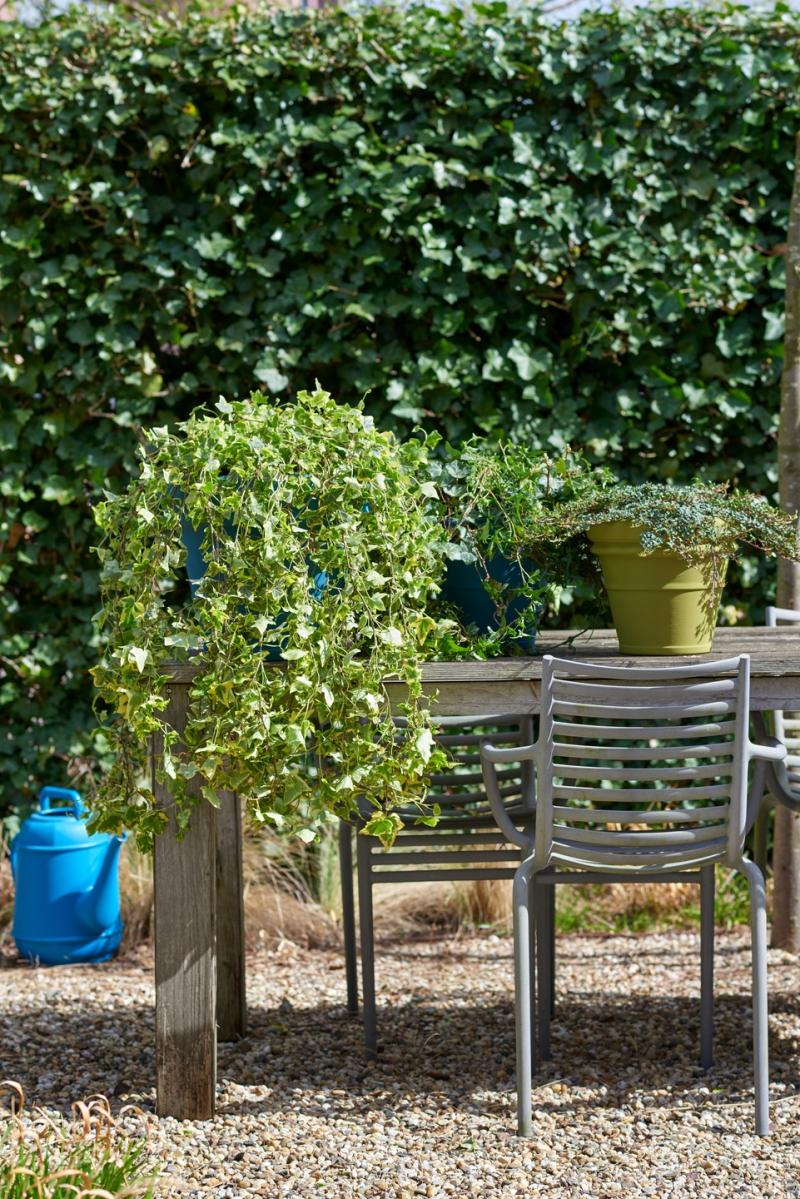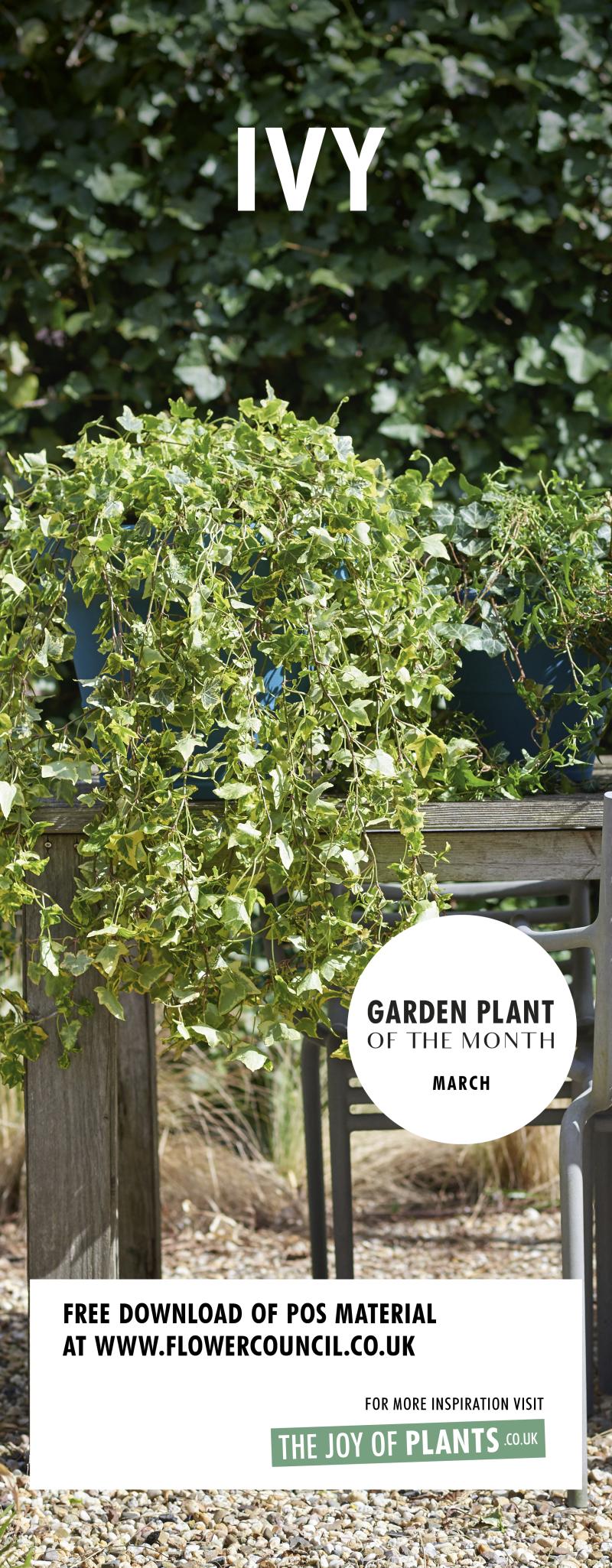Ivy: March Garden Plant of the Month
A touch mysterious and quietly ever-present: ivy (Hedera) is the big source of greenery that represents a stable element in the garden through all four seasons. This ground-covering or climbing foliage shrub is a hardy and evergreen. There’s a wide range of leaf colours, whilst all ivy species grow quickly and are easily trained, they can therefore be used to cover fences, wire fencing, summerhouses or walls. As groundcover, ivy gives weeds no chance, which makes it the most decorative fellow-gardener ever.
Range

Ivy trivia
- The name Hedera is derived from an ancient Indo-European sound that represents ‘seizing’ or ‘gripping’, which refers to the clinging roots.
- Because the plant is evergreen, ivy symbolises eternal life.
- Ivy also plays an important role in the garden’s ecology: birds like to nest amongst the greenery, and insects often drop by. Ivy therefore enriches the entire circle of life in its environment.
- Ivy appears in ancient Celtic and Germanic legends as a protector (it provides excellent insulation against heat and cold when grown against a house), bringer of luck and provider of hope. Particularly when Nature is hibernating, ivy’s greenery reminds us that Spring will come again.
Origin
Ivy is native to Asia, Europe and North Africa. In the wild the plant grows on trees and rocks and can climb to a height of 25-30 metres. It particularly thrives in cooler regions.
What to look for when buying
- The pot size and the number of stems or thickness of the plant must be in proportion.
- With Hedera ‘Arborescens’ check the distribution of buds or berries.
- Damaged or marked leaves are usually caused by the wrong storage or incorrect shipping.
- Ivy is prone to red spider mite, which is shown by a faint grey discolouration of the leaf.
Sales and display tips for ivy
Display ivy on a table in blocks or stripes by colour to draw more attention. Another way to bring this garden plant to life for consumers is to display it alongside other climbing plants like clematis, passion flower, or climbing roses for an inspiring effect. If you have the space, grow a green wall or train on a hut using chicken-wire, that can be re-styled appealingly every season.
Care tips for consumers
• Ivy thrives in both shady and light positions, but not in full sunlight.
• The soil may not dry out, but excess water is also not good for ivy.
• If the plant is in a sheltered spot, such as on a veranda or balcony, regular spraying helps to prevent red spider mite.
• Give some plant food once a month, particularly if the ivy in is in a container or pot.
• Good to know: the clinging roots can leave marks on walls.
• Prune in late Spring after the biggest growth spurt and in the Autumn before Winter arrives.
Downloadable POS material:
- Poster Hedera

- Banner Hedera

Garden Plant of the Month
Ivy is the Garden Plant for March 2018. The ‘Garden Plant of the Month’ is an initiative from the Flower Council of Holland. Every month the Flower Council works with representatives of the floriculture sector to choose a plant which is particularly popular with consumers, or which is not (yet) particularly well-known but which has the potential to do well in the garden, on the patio or on the balcony. Because everything is more beautiful with more plants.
More information:
Facebook: thejoyofplants
Twitter: @thejoyofplants
Thejoyofplants.co.uk
Thejoyofplants.co.uk is an initiative from the Flower Council of Holland to help consumers discover that you feel better with plants around you.








